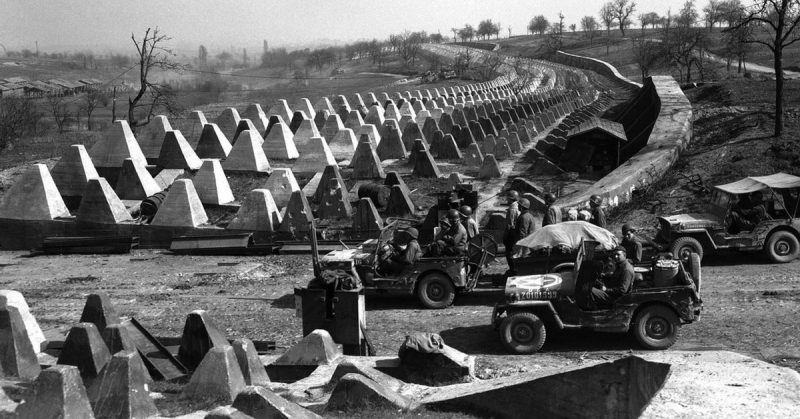During the build-up to WWII, the German government commissioned a line of defenses all along its border with France. The enormous undertaking seemed a waste to some people but would eventually have a huge impact on the war.
It was the West Wall, also known as the Siegfried Line.
Three Years of Work
The Siegfried Line was a huge project. It took three years to complete, from 1936 to 1939.
Built by Fritz Todt
The building of the line was overseen by Fritz Todt, a civil engineer who built many of Nazi Germany’s military installations, as well as road networks and other large government projects.
Building in Secret
It was a massive task, but one that Hitler wanted to be done in secrecy. He was making his first bold moves to expand German territory and was uncertain how foreign powers would react.
For two years, under a shroud of secrecy forts were built beneath camouflage nets and reed mats.
Despite hundreds of thousands of laborers and uniformed soldiers overseeing their work in the border regions, Hitler made no announcement of what was underway. Then, in 1938, he felt confident. The line had progressed enough for there to be no more need for secrecy. The existence of the vast defense network was announced.
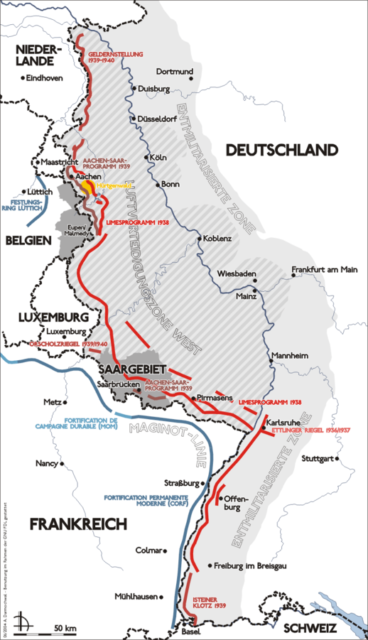
Longer Than the Maginot Line
The French Maginot Line ran along the length of France’s border with Germany. The French had constructed their line of defense openly and had not built along their border with Belgium as it might have caused a diplomatic upset.
Hitler realized that not doing so made France vulnerable to attack through Belgium – which he launched in 1939. To avoid any such vulnerability, he extended his defensive line all the way along his borders with both countries.
22,000 Defence Posts
As well as tank obstacles, trenches, and barbed wire, the line included 22,000 bunkers and pillboxes.
Defense in Depth
The use of the word “line” is a deceptive one. The German defensive system was not a single line but a network up to 30 kilometers deep, with double lines of fortifications in areas where the heaviest attacks were expected.
Combining Strength and Weakness
The line involved strongpoints surrounded by weaker fortifications. It was not a matter of cost effectiveness. The more vulnerable areas were there specifically to lure their enemy deeper into the network until they became bogged down.
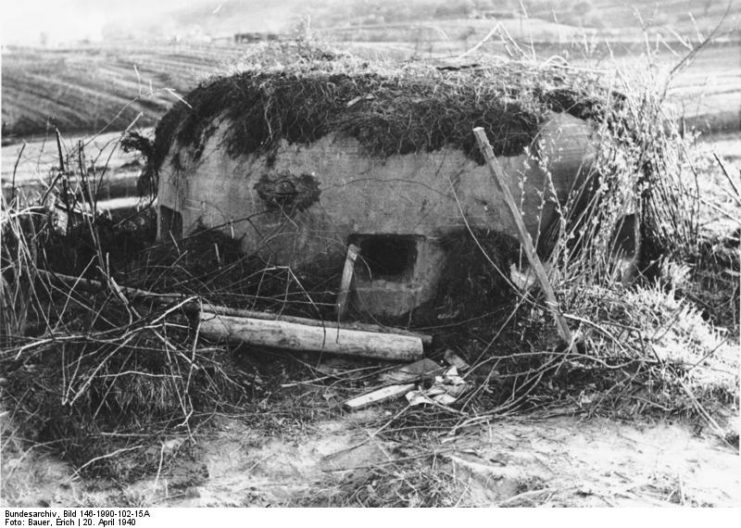
Photos of Other Defences
When the existence of the Siegfried Line was announced, it was done with great fanfare. Rudolf Kuehne’s book about the line, Der Westwall, made a huge deal of how strong the defenses were. It included photos of strong concrete forts. However, they were not pictures of the line. They were of Czech border defenses.
The Subject of Mockery
Many people outside Germany regarded the line as a waste of time and money, a fake deterrent at best. No-one was planning on attacking Germany. If war came, then the German defenses were nothing compared with the French Maginot Line.
There was so little regard for the line that Allied troops marched to war singing a mocking song about how they would hang out their washing on the line “if the Siegfried Line’s still there”.
Abandonment
By the fall of 1940, the Siegfried Line was unnecessary, but not for the reasons its critics had claimed. The staggering success of German armed forces had led to the swift conquest of France. With no defenses needed between the two countries, the line was abandoned. Weapons and supplies were removed and the bunkers locked up.
Rearmament
When the Allies began fighting their way through Normandy in 1944, it became apparent Germany would need to be defended. The mothballing of the Siegfried Line was hurriedly undone. Despite lost keys and four years of rust, the defenses were re-opened and re-equipped. Soldiers were sent to man them, ready to stop the Allied advance.
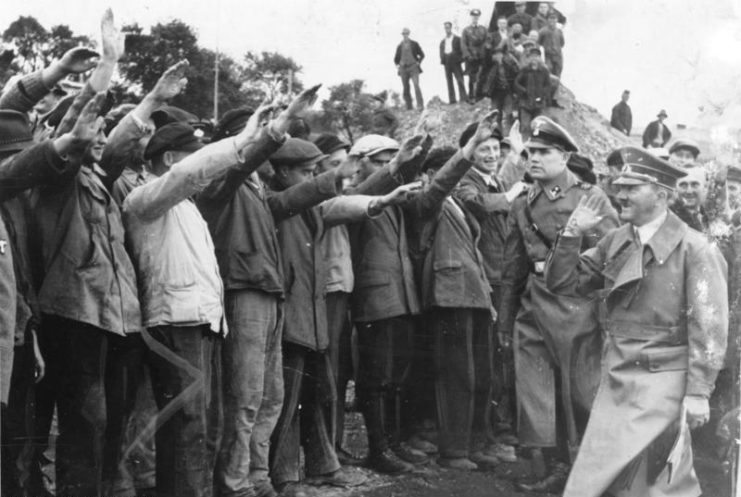
Rebuilding
The German command was not convinced the neglected Siegfried line could hold against the Allies. They called up civilians to dig new communication trenches and make something that could be defended.
They need not have worried. The Siegfried Line proved one of the toughest parts of Germany to take.
360,000 people digging
The attempt to call up people to dig new trenches was not as successful as the government had hoped. They were aiming for a million civilians and got just over a third of that number. Getting 360,000 people to turn up and dig was still an impressive achievement.
Six Months of Fighting
When the Allies reached the Siegfried Line, they spent six months fighting its defensive positions and the men holding them. Although it has seldom been regarded as a single unified battle, it was a huge and drawn-out conflict to overcome Germany’s defensive works.
Heavy Casualties
The fighting at the Siegfried Line cost the Allies dearly. The Americans, British, Canadians, and French suffered over a quarter of a million casualties while taking the line.
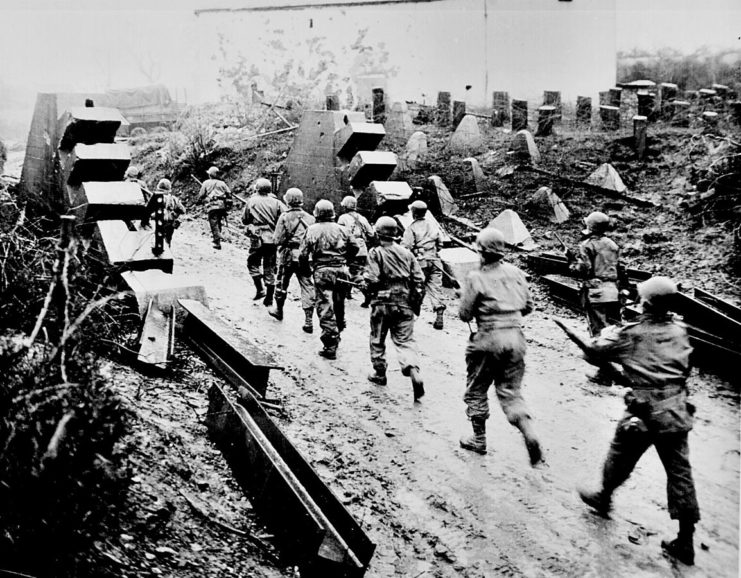
2 Million Attackers
At times, as many as 2,000,000 American soldiers were involved in the fighting for the Siegfried Line. It did not save the German empire, but it created a serious obstacle to those bringing it down.
A Fight for Future Leaders
Some extraordinary people fought at the Siegfried Line. Among them were men who would go on to become President of the United States of America, Prime Minister of Great Britain, US Secretary of State, a movie star, Archbishop of Canterbury, and Moderator of the General Assembly of the Church of Scotland.
It is Still There
The gray and broken remains of the Siegfried Line can still be seen, sprawling across hundreds of miles of German countryside, a reminder of a grim and bloody era.
Source:
Charles Whiting (1999), West Wall: The Battle for Hitler’s Siegfried Line
